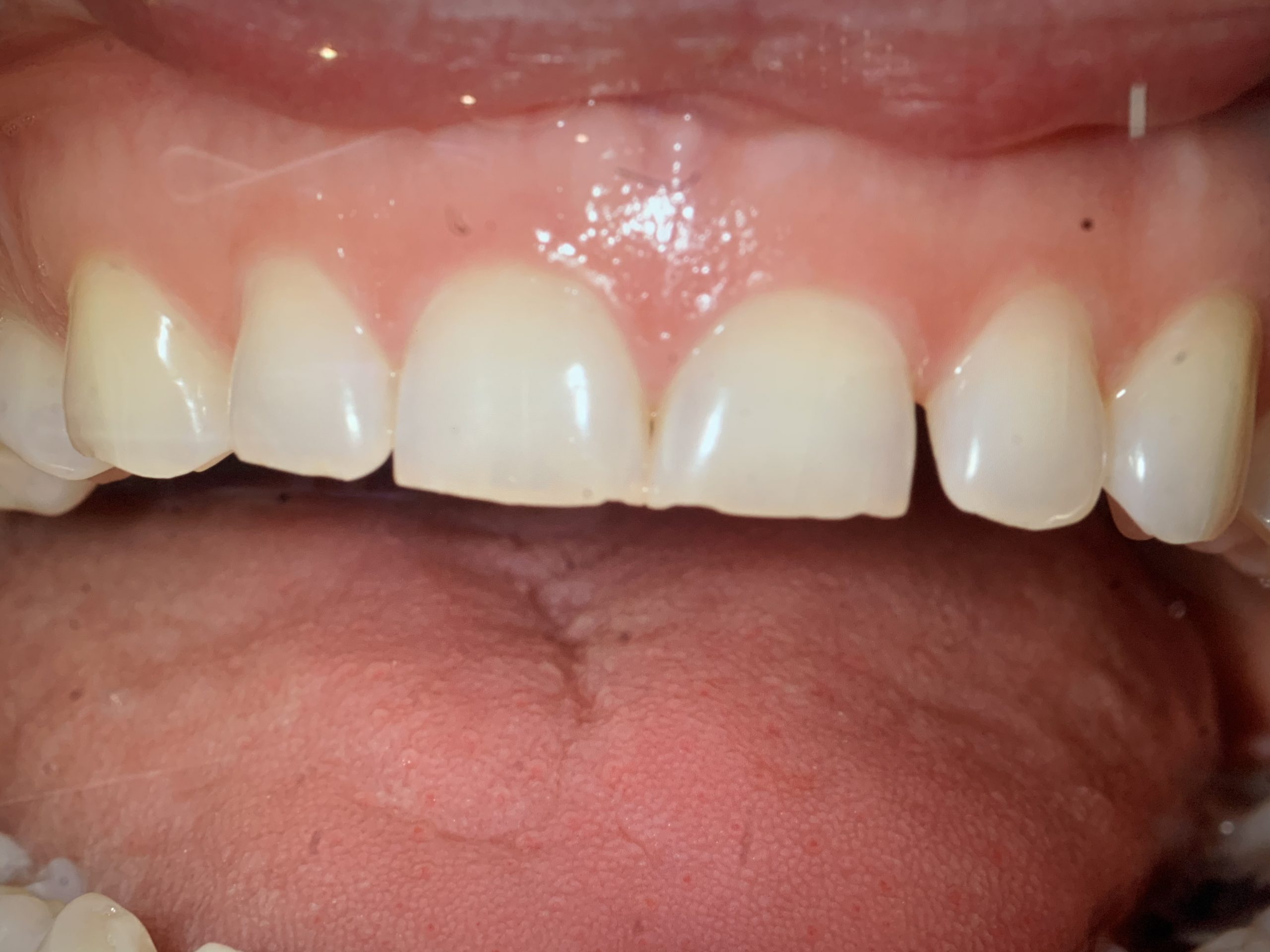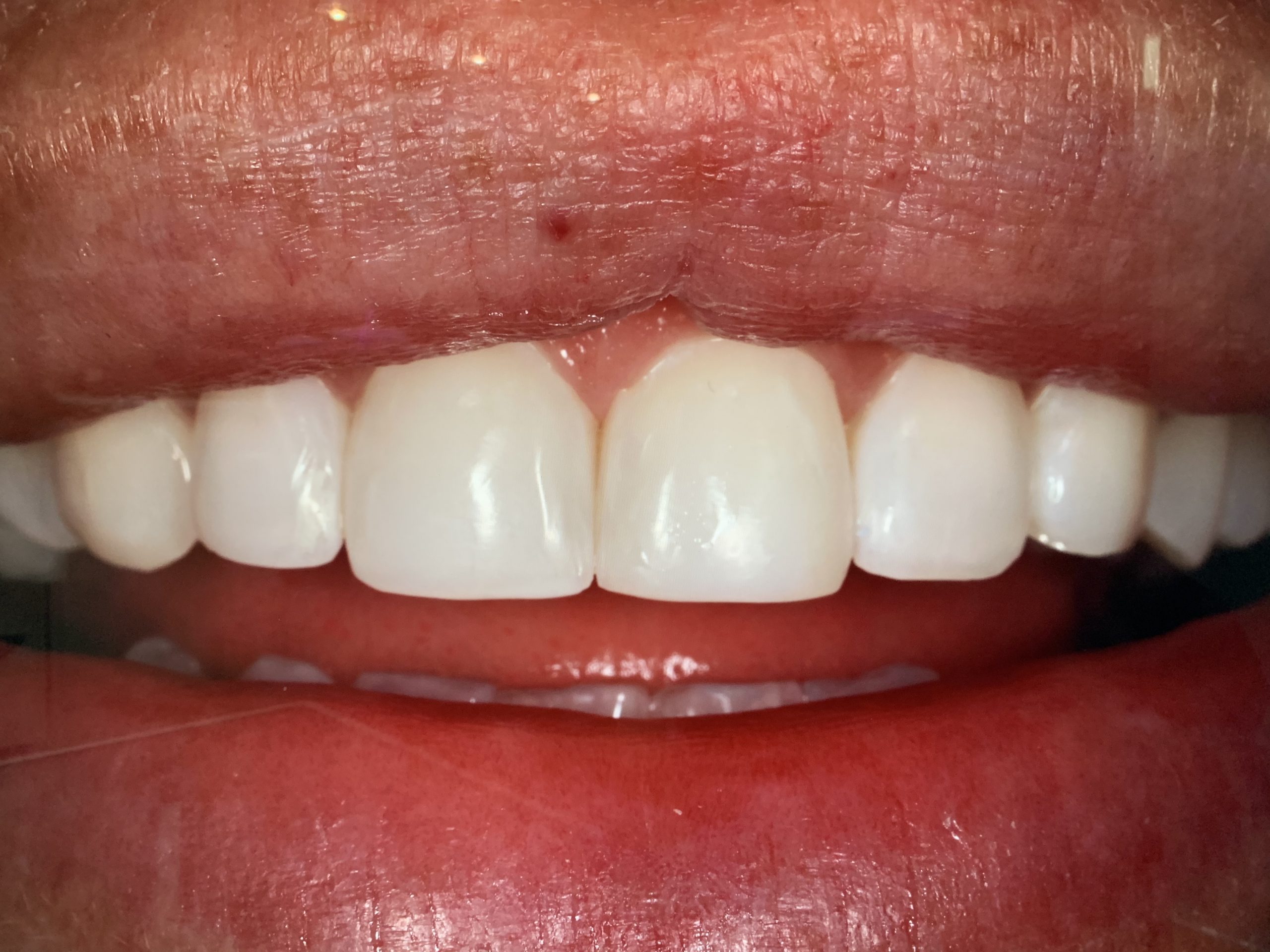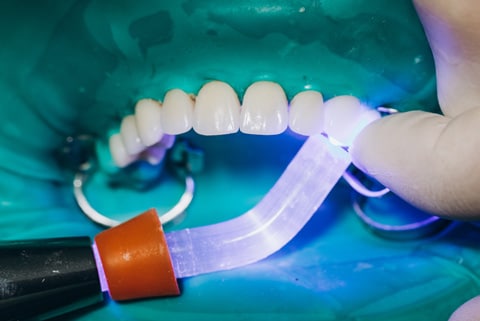If you’re looking to improve the health and appearance of your smile, there are a variety of options and treatments available to choose from, including composite bonding and veneers.
But which option is best for you?
That depends on a whole host of factors. In this guide, we’ll look at composite bonding and veneers, and consider the differences between the two, to help you decide which one will be better for you.
What is Composite Bonding?
Composite bonding is a popular treatment for repairing damaged teeth, reshaping teeth, or changing their colour.
The process involves applying small layers of tooth-coloured resin to the surface of the tooth and moulding it into the desired shape. The resin is then set using a curing light, and final adjustments are made once it has hardened.
Appearance
Composite bonding can create a very natural finish, blending beautifully with your existing teeth.
Longevity
On average, composite bonding lasts up to five years. However, its longevity will depend on how well you look after your teeth. Composite is not as hard as your natural teeth, so it can wear down, chip off, break, or become discoloured.
Treatable concerns
Composite bonding is ideal for small aesthetic flaws, such as:
- Gaps between the teeth
- Chips
- Worn edges
- Discolouration
Cost
Composite dental bonding is typically much more affordable compared to other cosmetic procedures, including veneers.
Maintenance
To keep your composite bonding looking its best and ensure it lasts as long as possible, you’ll need to take good care of them. Brush your teeth twice each day and floss regularly. You should also avoid any habits that will wear down your composites, such as biting your fingernails.
What are Veneers?
Veneers are thin shells made from porcelain material. They are bonded to the front surface of the tooth to enhance the colour, shape, size, length, or alignment.
Appearance
Veneers can be made to look natural, but they can also provide a more dramatic, flawless smile transformation.
Longevity
Provided you look after them correctly, veneers can last for up to 15 years, or even more.
Treatable concerns
Veneer can be used to treat a variety of cosmetic concerns, including:
- Discolouration
- Wear
- Chips
- Gaps
Cost
Veneers tend to be more costly than composite bonding.
Maintenance
To keep your veneers looking their best, it’s important to take aftercare seriously. You should brush and floss twice daily, and ensure you keep your gums healthy. Avoid chewing on hard objects or grinding your teeth, and make sure you visit your dentist regularly for check-ups.
What is the Difference Between the Two?
Composite bonding can be carried out in a single appointment and is a great option if you’re looking to fix minor aesthetic flaws.
Veneers are ideal for creating perfect smiles. The process of fitting veneers is more invasive than composite bonding, as the dentist has to remove more of the tooth’s natural structure.
However, composite bonding doesn’t tend to last as long as veneers, it also isn’t as stain-resistant and can be more susceptible to chipping.
Should I Choose Composite Bonding or Composite Veneers?
Whether you choose composite bonding or veneers depends on a number of factors, including the issue you’re trying to treat, the result you’re hoping to achieve, your lifestyle, and your budget.
For example, bonding is recommended for minor issues and is usually much faster and cheaper than veneers. Veneers, on the other hand, can create a much more dramatic transformation, so they may be your preferred choice if you’re dreaming of a totally flawless smile!
The best way to decide which option is best for you is to have a consultation with your dentist.
How to Find a Dentist That Can Help You with Tooth Bonding?
Take the first step towards reclaiming your confidence and improving your smile! Contact us today to arrange a consultation with a friendly member of our experienced team. We are always on hand to answer any of your questions.
Read the related article:
Before | After


Before | After

